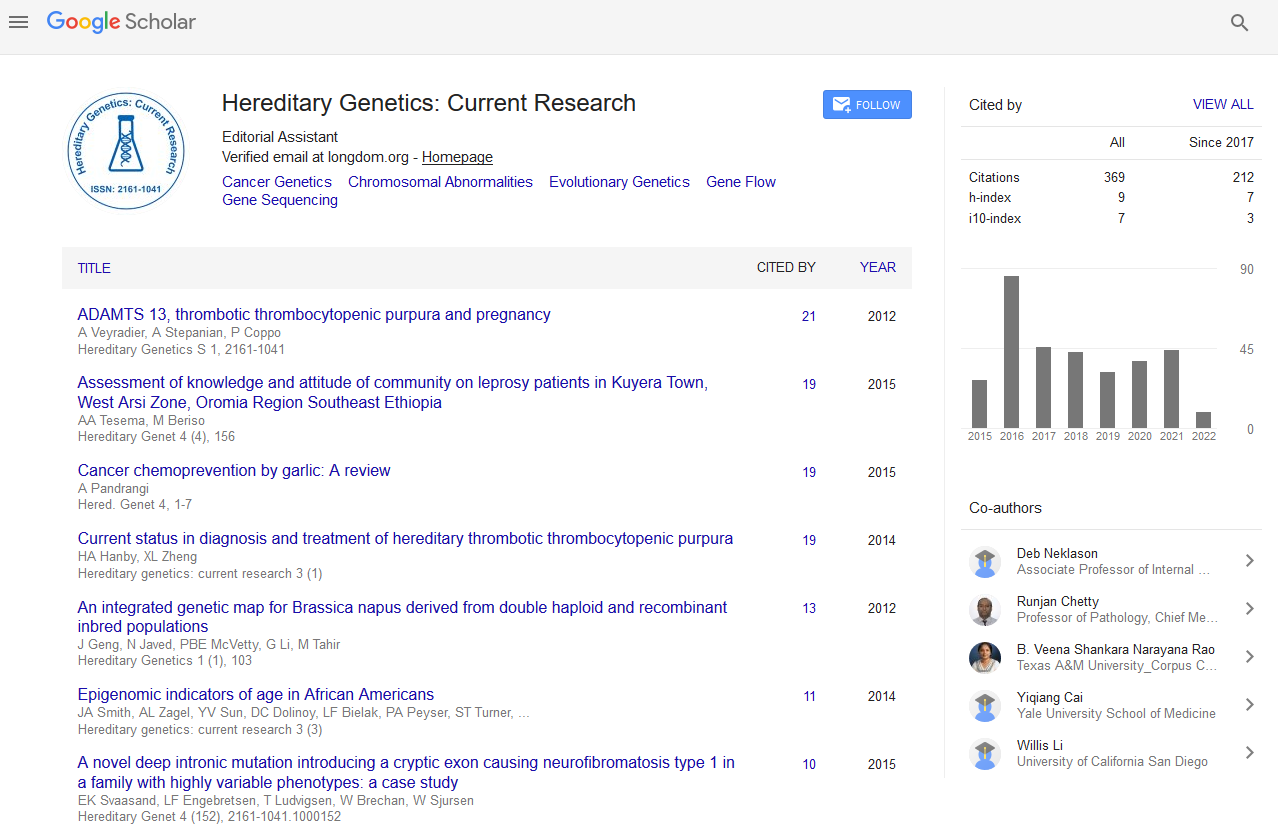PMC/PubMed Indexed Articles
Indexed In
- Open J Gate
- Genamics JournalSeek
- CiteFactor
- RefSeek
- Hamdard University
- EBSCO A-Z
- NSD - Norwegian Centre for Research Data
- OCLC- WorldCat
- Publons
- Geneva Foundation for Medical Education and Research
- Euro Pub
- Google Scholar
Useful Links
Share This Page
Journal Flyer

Open Access Journals
- Agri and Aquaculture
- Biochemistry
- Bioinformatics & Systems Biology
- Business & Management
- Chemistry
- Clinical Sciences
- Engineering
- Food & Nutrition
- General Science
- Genetics & Molecular Biology
- Immunology & Microbiology
- Medical Sciences
- Neuroscience & Psychology
- Nursing & Health Care
- Pharmaceutical Sciences
Role of DNA methylation in sperm nuclear-encoded of oxidative phosphorylation pathway regulation and embryo development
4th International Congress on Epigenetics & Chromatin
September 03-05, 2018 | London, UK
Mahmoud Hashemitabar
Ahvaz Jundishapur University of Medical Sciences, Iran
Scientific Tracks Abstracts: Hereditary Genet Curr Res
Abstract:
Statement of the Problem: DNA methylation functions through the imprinting control regions (ICRs). It is a parental allelic specific modification process through the differentially methylated regions (DMRs) can specify cell lineage commitment during the embryo development. Paternal methylation changes in the promoter loci of (IGF2/H19 CTCF6) are associated with male infertility, failure in the transition from the 8-cell stage to the morula and embryo loss. But it???s unclear existence of differentially methylation signature for promoter loci of nuclear-encoded (ncDNA) of oxidative phosphorylation (OXPHOS). Here we illuminate the role of COX6b2 as one of the ncDNA of OXPHOS protein in sperm function and fertilization. Methodology & Theoretical Orientation: COX6B2 assessment was performed by immunofluorescent assays and by solubilizing sperm protein for 2D- gel electrophoresis and western blotting and also by sperm RNA extraction for real-time PCR to determine the difference of COX6B2 protein and gene expression between asthenozoospermia and normal fertile groups. Also, a meta-analysis through the PubMed, Cochrane central register and EMBASE was performed to reveal the paternally DMRs loci in OXPHOS gene regulation. Findings: The percentage of COX6B2+ in midpiece of the sperm was lower in asthenozoospermia than normal group. The COX6B2 level by 2-D gel electrophoresis and western blotting and COX6B2 gene expression in the asthenozoospermic samples were significantly lower than the normal fertile group. Meta-analysis revealed that DMRs in both sperm and oocyte (stemness transcriptome point of view) are closely similar to embryonic stem (ES) cells, show largely unmethylated DMRs loci e.g. for Rhox homeobox gene. The OXPHSO pathways are regulated mainly via the sperm-specific differentially methylation pattern in the post-implantation. Conclusion & Significance: Understanding the epigenetic differences between gametes and after fertilization, with the comparison of DMRs among the fertile and infertile couples, help to achieve the new biomarkers for predicting infertility and IVF/ICSI success. Compensation of insufficient IVF/ICSI cycle condition may be ameliorated abnormal de novo DNA methylation in association with inhibition in early embryonic arrest. Recent Publications 1. Hashemi Tabar M, Tabandeh M R, Moghimipour E, Dayer D, Ghadiri A A, Allah Bakhshi E, et al. (2018) The combined effect of Pdx1 overexpression and Shh manipulation on the function of insulin???producing cells derived from adiposetissue stem cells. FEBS Open Bio 8(3):372-82. 2. Hashemitabar M, Bahmanzadeh M, Mostafaie A, Orazizadeh M, Farimani M and Nikbakht R (2014) A proteomic analysis of human follicular fluid: comparison between younger and older women with normal FSH levels. International Journal of Molecular Sciences 15(10):17518-40. 3. Rezaei M, Zeidooni L, Hashemitabar M, Razzazzadeh S, Mahdavinia M and Ghasemi K (2014) Gamma-tocopherol enhances apoptotic effects of lovastatin in human colorectal carcinoma cell line (HT29). Nutrition and Cancer 66(8):1386- 93. 4. Khodaei F, Ahmadi K, Kiyani H, Hashemitabar M and Rezaei M (2018) Mitochondrial effects of teucrium polium and prosopis farcta extracts in colorectal cancer cells. Asian Pacific Journal of Cancer Prevention: APJCP 19(1):103-109. 5. Houshmand G, Mansouri M T, Naghizadeh B, Hemmati A A and Hashemitabar M (2016) Potentiation of indomethacininduced anti-inflammatory response by pioglitazone in carrageenan-induced acute inflammation in rats: Role of PPAR? receptors. International Immunopharmacology 38:434-42.
Biography :


